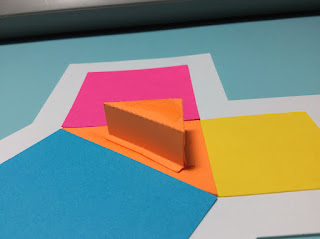I was amazed at how easy it was to convert any Silhouette Studio file into a file to be printed with my Ender 3 V3 SE, 3D printer in Tinkercad. TinkerCad is a free 3D modeling program, http://tinkercad.com.
Using the Silhouette Studio Business Edition (you need to have this upgrade), save your file as an SVG. The project designed in the Silhouette software should not be bigger than your 3D printer space. For my Ender 3 printer, the size is 8.6 x 8.6 x 9.8 inches. While you can resize it later, it is easier to stay within your limitations of the size of your 3D printer. As an aside, if it is a large project, don't cram the entire project onto one Silhouette workspace with little space between pieces. Break up the project into different Silhouette Studio files. Also, do not save any work outside of the viewable area in Silhouette as everything is copied to the SVG file.
At the end of this tutorial about Tinkercad, I will explain how I created the print tolerance puzzle using the Silhouette software because I wanted to know how close puzzle pieces had to be in order to slide into one another easily after being 3D printed. As a conclusion, I determined that I like .014 inch tolerance for my Ender 3 printer.
In TinkerCad, create an account and then Create a 3D Design
In the upper left portion of the screen, is the file name "Daring Krunk". A unique file name is automatically created each time a new project is created. Type over the file name and change it to your file name. In the upper right portion of the screen, there is an import command. Click the import command.
Choose your Silhouette SVG file.
Choose the Import command.
The SVG file is then placed on the workplane in Tinkercad. Click on the image of the design. The result is shown above. There is a blue outline around the image. To the right of this image is the height the SVG when imported, 10 mm. The height can be changed by either using the slider or hovering over the height of 10 and changing its value.
I chose 2.5 mm. You will notice that the height of the design was recalculated in Tinkercad when the height was changed. The design can now be exported to your 3D printer by selecting Export in the upper right hand corner.
Click on .STL to save the file. The file is now ready to be used in your 3D printing software.
(In my Creality Print software for my Ender 3 printer, I had to Open the file and Slice it. Once sliced, I exported the file and printed my design.)
Creating the print tolerance puzzle using the Silhouette software
Using the puzzle feature, I created a 2 row x 2 column puzzle.
I broke the path of each piece in point editing mode.
In the Offset window, I offset each internal wavy line with a different value, .01, .014, .016 and .02 inches. Delete the original curvy line as it is no longer needed.
Send the frame of the puzzle to the back ( highlighted in blue).
In the Modify window, subtract both images.
Please note, I changed the border to a curved corner box before I modified it (not shown).
The Silhouette created the above print tolerance puzzle.























